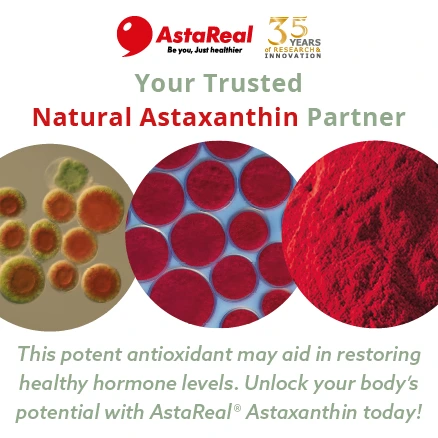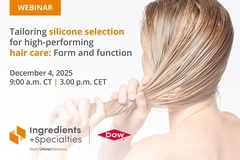Kao boasts encapsulation technology for UV absorber-free sunscreen launch
 “Since this product does not use UV absorbers, it does not fall under the current regulations in places like Hawaii and Thailand and can be used,” says Kurihara.
“Since this product does not use UV absorbers, it does not fall under the current regulations in places like Hawaii and Thailand and can be used,” says Kurihara.Kao Corporation has announced an advancement in sunscreen technology, which uses titanium dioxide capsules as a UV-scattering agent to replace chemical UV absorbers in product formulation.
The technology will debut in the SPF50 Bioré UV Aqua Rich Watery Hold Cream, which launches in February next year in Japan. Kao describes the product as having a light texture, leaving no white cast and delivering strong UV protection for sensitive skin.
Personal Care Insights speaks to Jun Kurihara, from Kao's Skin Care Products Research Laboratory, about how UV absorber-free sunscreen compares to traditional UV-absorbing sunscreens in terms of efficacy. According to Tawara, it is not possible to compare the two since there is such a big difference in the types and amounts of ingredients.
“The effectiveness of sunscreens is defined by international standards. For example, this product displays SPF50/PA+++ in accordance with ISO 24444 (SPF) and ISO 24442 (UVA-PF). If the values are the same, the effectiveness is equivalent regardless of the type of UV absorbers or scattering agents used,” says Kurihara.
Technology for even application
Sunscreens that opt for a physical barrier to block the sun, rather than absorb the rays, use UV-scattering agents such as titanium dioxide that reflect UV rays. These agents are typically oleophilic, meaning they only disperse well in oil-based formulations. While oil-based sunscreens can deliver adequate UV protection, they often result in a greasy texture and a noticeable white cast.
On the other hand, water-based formulations offer a lighter feel but struggle to achieve effective UV protection because the scattering agents do not disperse evenly. Moreover, as water evaporates after application, gaps can form in the protective layer, reducing effectiveness.
To address these challenges, Kao developed an encapsulation technology that enables the dispersion of UV-scattering agents within a water-based formulation. The key innovation involves creating capsules that stabilize UV-scattering agents in an aqueous phase.
These capsules have properties that allow them to maintain affinity with both water and oil. By designing the size, material and concentration of these capsules, Kao achieved a formulation that disperses the UV-scattering agents evenly across the skin.
Damaging sunscreens
An increasing amount of research is shedding light on the harmful chemicals found in sunscreens that endanger aquatic life. Chemical UV filters, such as oxybenzone, are known to cause destructive coral bleaching and as a result, countries that rely on their reefs for tourism income have banned certain sunscreens.
Kurihara says that Kao has not yet confirmed any negative environmental impact caused by the titanium dioxide capsules. However, he says, “Since this product does not use UV absorbers, it does not fall under the current regulations in places like Hawaii and Thailand and can be used.”
Launch of Bioré UV Aqua Rich Watery Hold Cream
The encapsulation technology will launch in the Bioré UV Aqua Rich Watery Hold Cream, the first non-chemical sunscreen in the Bioré Aqua Rich series.
.jpg) The encapsulation technology will launch in the Bioré UV Aqua Rich Watery Hold Cream.The cream features a water-based formulation containing two trillion aqua capsules per use. These capsules provide a moisturizing layer that clings to the skin, which Kao says delivers all-day hydration without a greasy feel.
The encapsulation technology will launch in the Bioré UV Aqua Rich Watery Hold Cream.The cream features a water-based formulation containing two trillion aqua capsules per use. These capsules provide a moisturizing layer that clings to the skin, which Kao says delivers all-day hydration without a greasy feel.
The product’s formulation is alcohol-, paraben- and colorant-free and is said to wash off easily with soap or cleanser, making it convenient for everyday use. The sunscreen will be available nationwide in Japan next year, following a preliminary launch in selected drugstores.
When asked if the formulation will be available outside of Japan, Kurihara says, "Although there are no confirmed plans yet, we believe there is a global demand for non-chemical UV products and are considering their development. Due to differences in regulations and consumer needs in each country and region, we will proceed while assessing the possibilities.”
With additional reporting from Alexandra Branscombe













